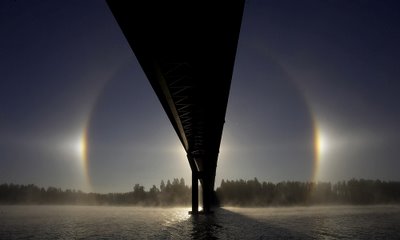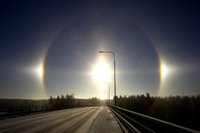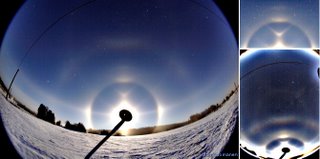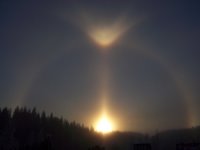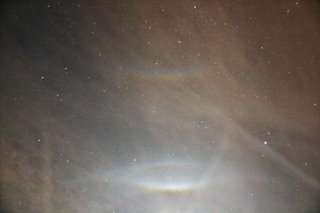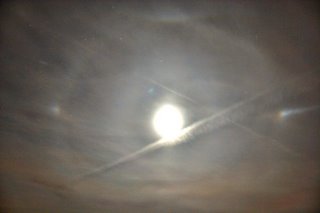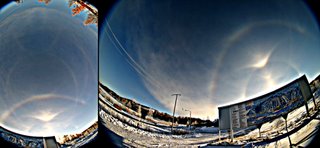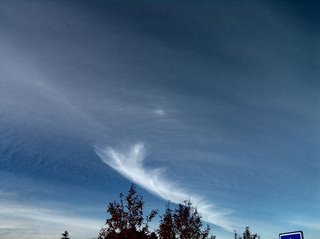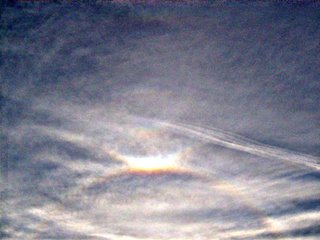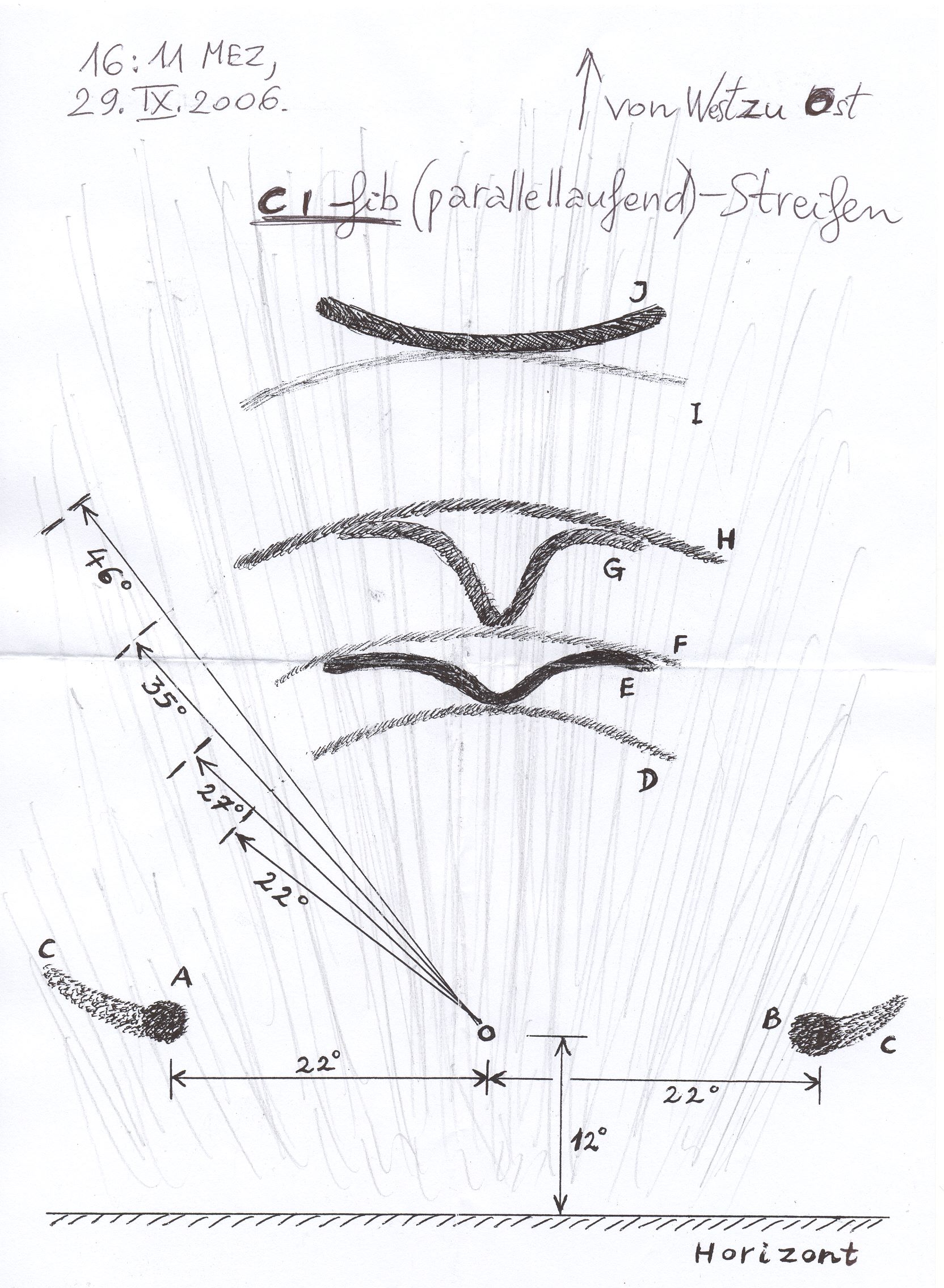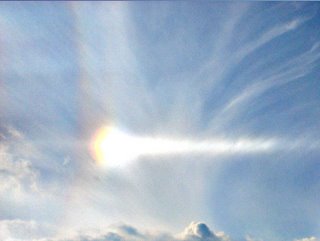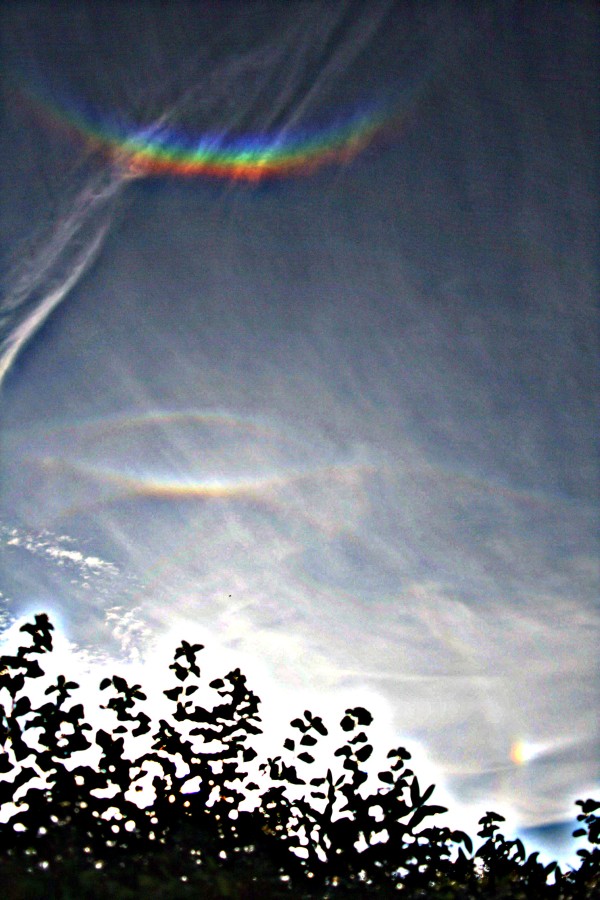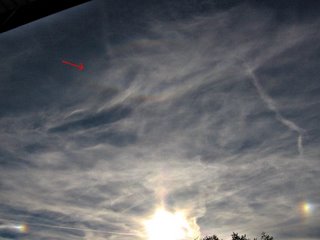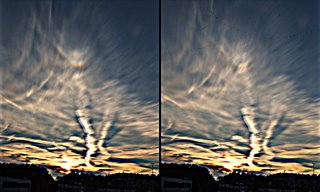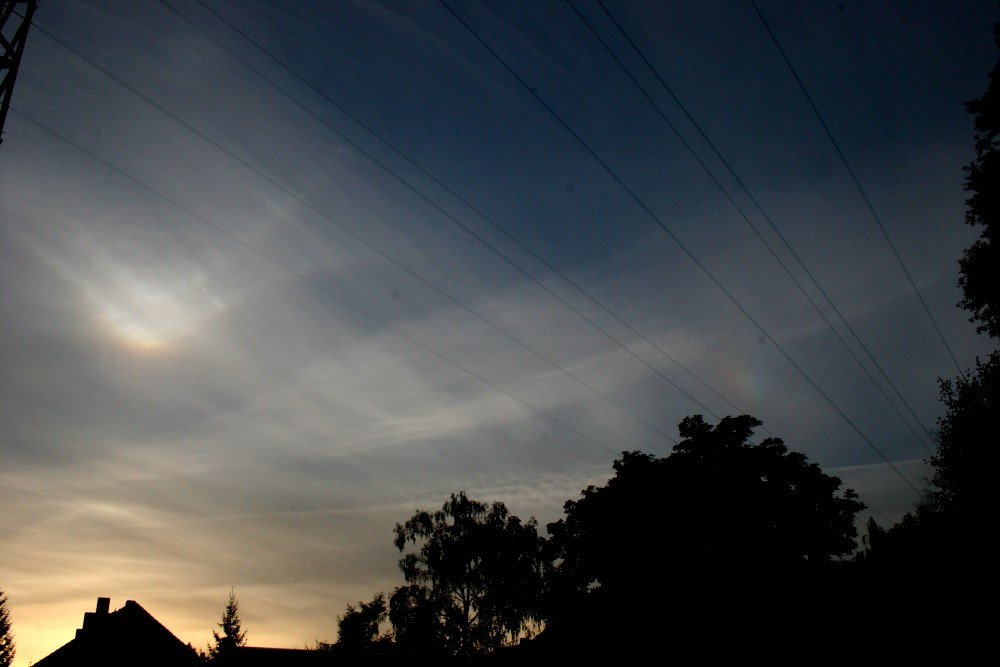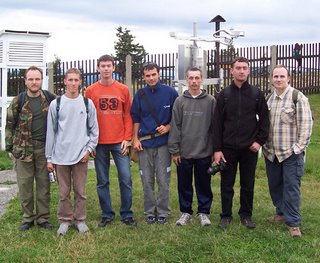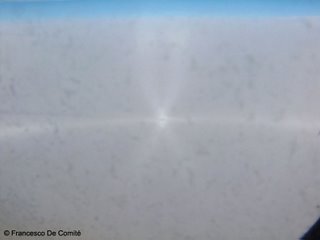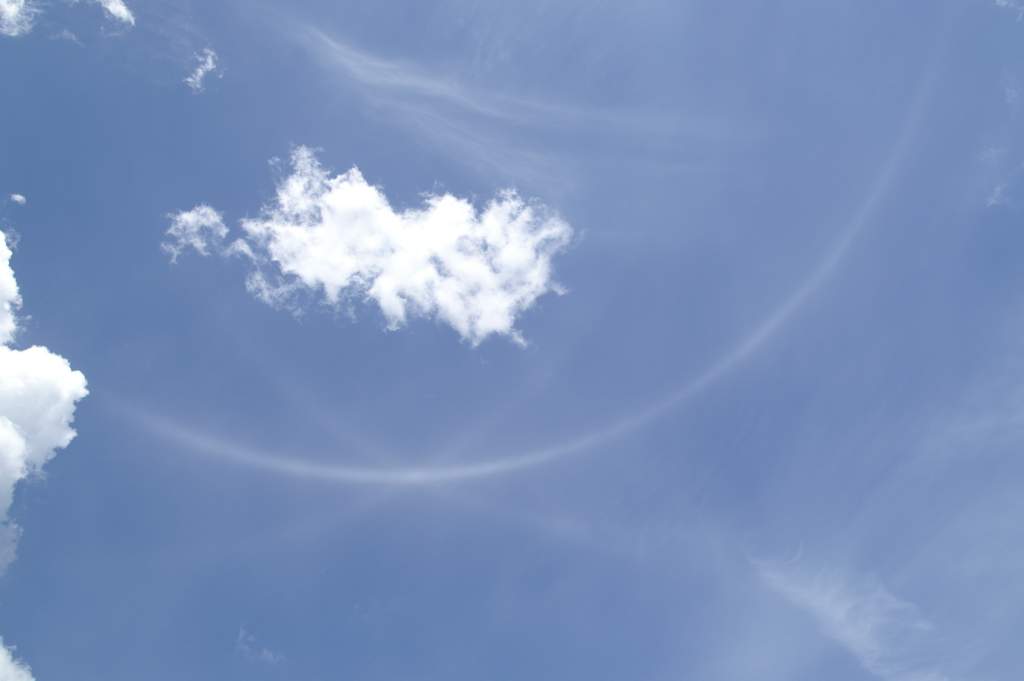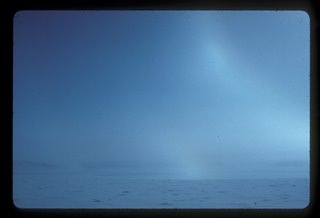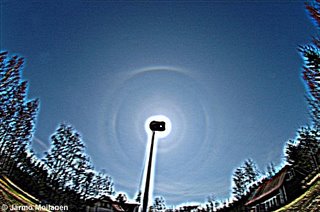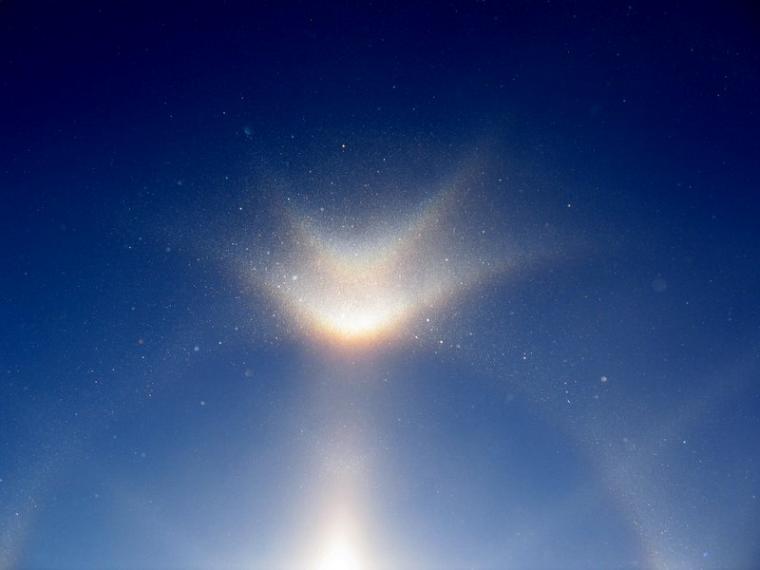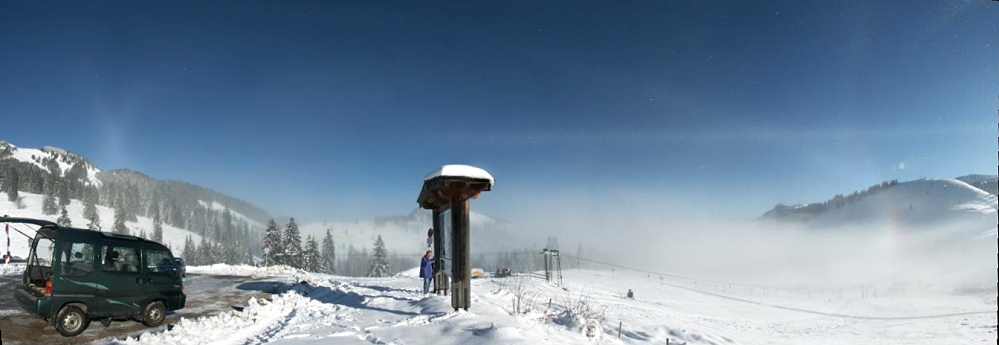 On 11th of december 2006 I saw a wonderful diamond dust phenomenon in the Wendelstein area in the altitude of ca. 1100m. It was the best in my life! I was a part of it and around me floated ice crystals with different white and coloured arcs. Directly over my head was formed an aura, the upper tangent arc I could touch and on the opposite side of the sun were some white arcs crossed in three-dimensional space.
On 11th of december 2006 I saw a wonderful diamond dust phenomenon in the Wendelstein area in the altitude of ca. 1100m. It was the best in my life! I was a part of it and around me floated ice crystals with different white and coloured arcs. Directly over my head was formed an aura, the upper tangent arc I could touch and on the opposite side of the sun were some white arcs crossed in three-dimensional space.The origin of ice crystals were definitely natural. The clouds came from the very cold Inn valley and creeped up the mountain sattle. The sun elevation was 18 to 20 degrees.
I've seen with naked eye the following haloes: : 22° halo, upper and lower tangent arc (extremely bright!), complete sun pillar, 46°halo (very faint lower part), complete parhelic circle, anthelion, 120deg parhelia, infra- and supralateral arcs, Wegeners anthelic arc (one of the cross bows), Tricker's and diffuse anthelic arcs, heliac arc, subhelic arcs and Moilanen arc.
More pictures are here.
